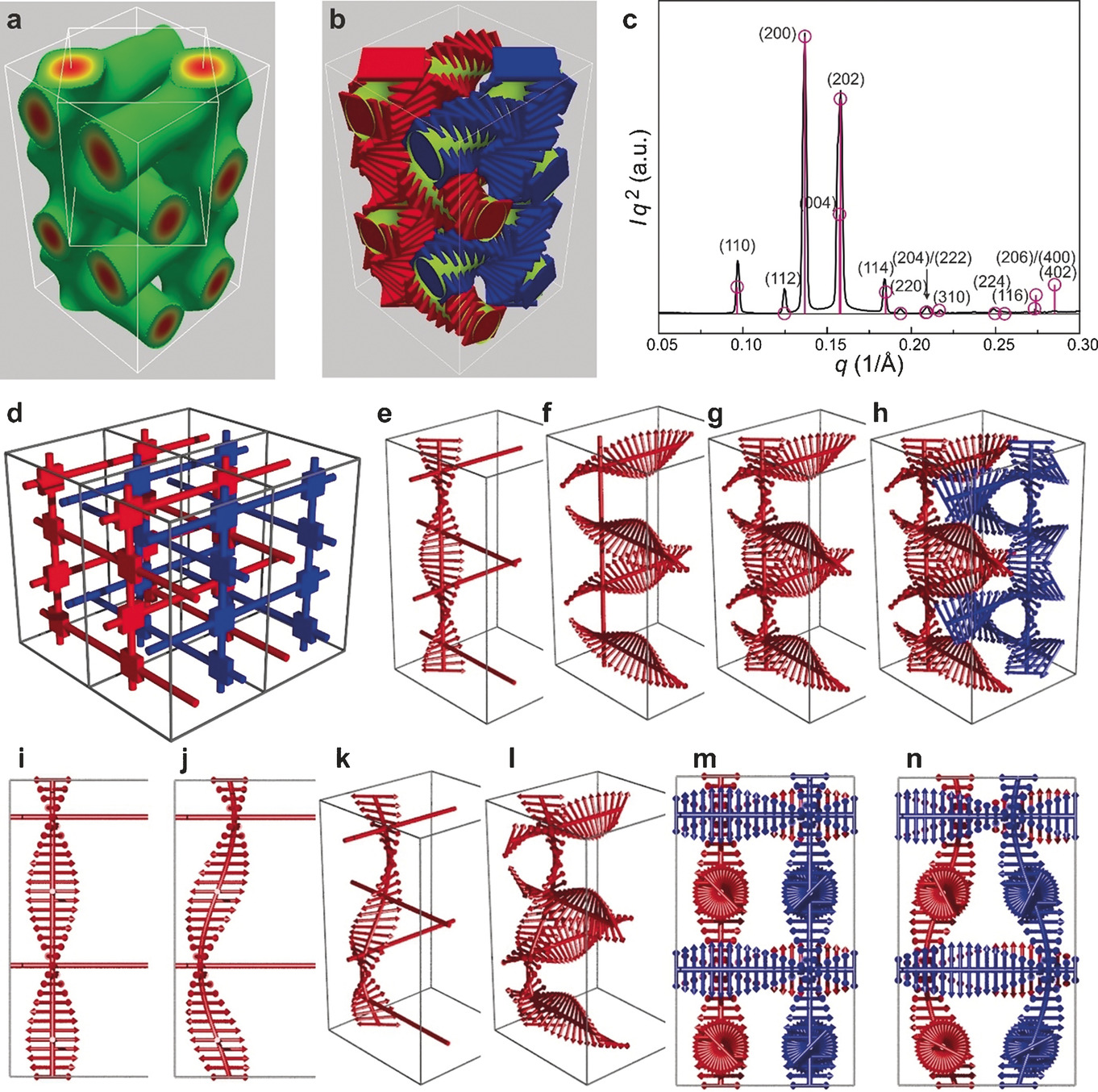The so-called smectic-Q (SmQ) liquid crystal phase was discovered in 1983 in rod-like molecules, but its structure remain unclear in spite of numerous attempts to solve it. Herein, we report what we believe to be the solution: A unique bicontinuous phase that is non-cubic and is made up of orthogonal twisted columns with planar 4-way junctions. While SmQ had only been observed in chiral compounds, we show that this chiral phase forms also in achiral materials through spontaneous symmetry breaking. The results strongly support the idea of a helical substructure of bicontinuous phases and long-range homochirality being sustained by helicity-matching at network junctions. The model also explains the triangular shape of double-gyroid domains growing within a SmQ environment. SmQ-forming materials hold potential for applications such as circularly polarized light emitters that require no alignment or asymmetric synthesis.

原文链接:https://onlinelibrary.wiley.com/doi/epdf/10.1002/anie.201712812